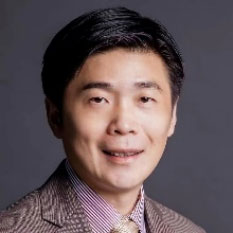-
Exploring New Horizons in Optical Fibre Sensing Based on Gas Interactions/Distributed acoustic sensing on submarine optical fibre cables for seismic monitoring

题目:Exploring New Horizons in Optical Fibre Sensing Based on Gas Interactions/Distributed acoustic sensing on submarine optical fibre cables for seismic monitoring
时间:2025-06-13
地点:电院5号楼214会议室
In this presentation, we will showcase recent advances that demonstrate the potential of gas-based interactions in distributed optical fibre sensing. These include sensors with significantly enhanced response and sensitivity compared to silica-only systems, and the ability to deliver absolute measurements that are inherently immune to temperature and strain cross-sensitivities.详情>>
-
面向量子,面向AI,面向量子AI——从2024年诺贝尔物理学奖看学科交叉

题目:面向量子,面向AI,面向量子AI——从2024年诺贝尔物理学奖看学科交叉
时间:2024-10-31
地点:电院5号楼214会议室
2024年诺贝尔物理学奖授予了John J. Hopfield与Geoffrey E. Hinton, 以表彰他们“为利用人工神经网络进行机器学习做出的基础性发现和发明”。诺奖委员会在介绍中提到“他们利用物理学的工具开发了构成现今强大机器学习基础的方法”。当今科学研究的范式正在发生深刻的变化,学科交叉已经成为未来科学发展的必然趋势,正在催生出前所未有的创新思维与解决问题的新方法。在本报告中,我将从获奖人的求学经历、科研历程、突出贡献等方面简要解读2024年诺贝尔物理学奖,并探讨学科交叉融合的重要性。我将简要介绍量子人工智能这一交叉前沿领域,通过具体的例子展示量子物理与人工智能如何交叉融通,互相促进。此外,我将讨论量子人工智能领域若干亟待解决的基本问题。 详情>>
-
When low-dimensional materials meet metasurfaces

题目:When low-dimensional materials meet metasurfaces
时间:2024-10-18
地点:电信楼群1号楼418室
Cheng-Wei Qiu
Department of Electrical and Computer Engineering, National University of Singapore, Singapore 117583
*E-mail: chengwei.qiu@nus.edu.sg详情>> -
Microwave Photonic Radars: What can Photonics bring to Radars?
题目:Microwave Photonic Radars: What can Photonics bring to Radars?
时间:2024-07-01
地点:电院1-518A会议室
As the only method for all-weather and long-distance target detection and recognition, radar has been intensively studied since it was proposed, and is considered as an essential sensor for future intelligent society. In the past few decades, great efforts have been devoted to improving radar’s functionality, precision, and response time, of which the key is to generate, control, and process a wideband signal at a high speed. Thanks to the high frequency, large bandwidth, low loss transmission, and electromagnetic immunity provided by modern photonics, implementation of the radars in the optical domain can provide better performance in terms of resolution, coverage, and speed which may not be achievable using traditional, even state-of-the-art electronics. In this talk, I'll give an overview of the photonic technologies that are currently known to be attractive for radars. System architectures and their performance that may interest the radar society are emphasized. Emerging technologies in this area and possible future research directions are discussed.详情>>
